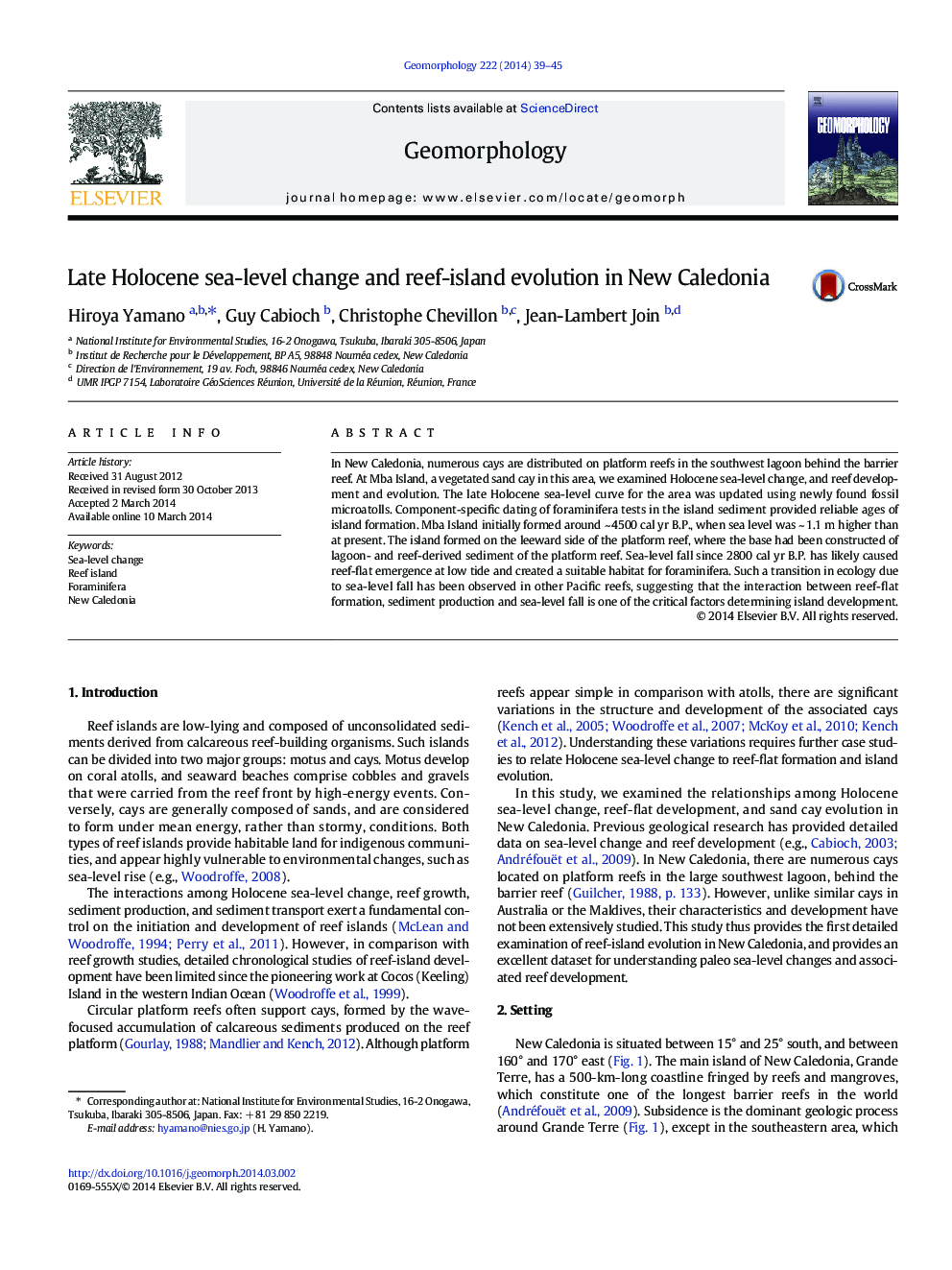| Article ID | Journal | Published Year | Pages | File Type |
|---|---|---|---|---|
| 6432408 | Geomorphology | 2014 | 7 Pages |
In New Caledonia, numerous cays are distributed on platform reefs in the southwest lagoon behind the barrier reef. At Mba Island, a vegetated sand cay in this area, we examined Holocene sea-level change, and reef development and evolution. The late Holocene sea-level curve for the area was updated using newly found fossil microatolls. Component-specific dating of foraminifera tests in the island sediment provided reliable ages of island formation. Mba Island initially formed around ~ 4500 cal yr B.P., when sea level was ~ 1.1 m higher than at present. The island formed on the leeward side of the platform reef, where the base had been constructed of lagoon- and reef-derived sediment of the platform reef. Sea-level fall since 2800 cal yr B.P. has likely caused reef-flat emergence at low tide and created a suitable habitat for foraminifera. Such a transition in ecology due to sea-level fall has been observed in other Pacific reefs, suggesting that the interaction between reef-flat formation, sediment production and sea-level fall is one of the critical factors determining island development.
